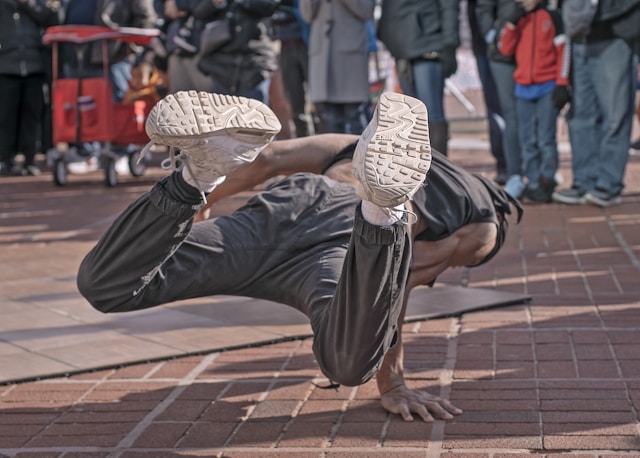Alright, listen up. If you think street performing is just a side hustle for the unemployable, you’ve got it twisted. I hit up two legends of the street game, Michael Colyar and Ben Hanlin, who broke down how they turned their act into cold, hard cash. And they didn’t pull any punches.
Here’s how you really get paid out there, straight from two guys who know the grind.
@theandrewshoe Thank you guys so much for an unforgettable 2023 <3 love y’all #fyp #2023wrapped #viral #streetperformer #pianotok #compilation #2024 #newyear #nye ♬ оригинальный звук – Freezy18
Lesson One: Find Your Spot—and Own It
Michael Colyar? He’s an old head like me and you might have seen him on BET as a comedian back in the day. He started in Chicago, battling the wind, the snow, and a crowd that’d walk right past you if you didn’t have the goods. When winter hit, Michael packed his act and his crew and rolled out to Venice Beach, where he flipped the game on its head. “I became the king of thinking outside the box,” he told me, and he meant it. In Venice, it wasn’t enough just to show up. You had to bring something nobody else was bringing.

One dude, Michael talked about would lay on broken glass with people standing on him—bare-chested, mind you—just to scrape by on $40 a day. Michael? He was not having that. “If you’re making $40 for that, you are crazy. You need to make $400!” And that’s what Michael showed everyone on that beach: if you want real cash, you gotta command it.
His story got me thinking. It’s not just about the hustle; it’s about where you lay your roots. Pick the right spot, make it yours, and let them feel you. Don’t just be another act—they’ve gotta remember you when they walk away.
Lesson Two: Work the Crowd Like a Pro
Then there’s Ben Hanlin, a magician from Covent Garden in the U.K., who took a whole different approach. He didn’t just roll up and do his thing. He hung back, studied every move the other acts made, and soaked up their secrets. “Every street show pretty much follows the same pattern,” Ben said. “You gotta have a big trick, spend half an hour building up, then ask for your hat right before the big finish.”

Ben laid it down clear. It’s all about the tease. You don’t throw out your best trick right away—you build, you play, you make them need to see what’s next. It’s like setting up a hustle. The crowd’s already itching to pay you by the time you ask. Now that’s game right there.
Listening to Ben, I realized street performing isn’t just a talent; it’s a straight-up sales pitch. The act is the bait, but it’s the wait that hooks ‘em.
Lesson Three: Leave Your Mark (and Get Your Respect)
For Michael, Venice Beach wasn’t just about making a quick buck. He was building something bigger than himself—a legacy. “They actually have a picture of me…my footprints and my hands are there to commemorate what I had done out there.” That hit hard. In the end, it wasn’t just the cash that made him a legend—it was what he gave back. Michael taught other performers to know their worth, to push for more, and to leave something real behind.
Think about that. When you’re out there grinding, it’s not just about today’s take. You’re laying down your name, setting a standard. That’s the kind of rep money can’t buy.
So yeah, street performing isn’t just a job—it’s a hustle, a lifestyle, and a test of guts. Michael and Ben didn’t just make money; they changed the game. And if you’re out there trying to make it happen, take a page out of their book. Respect the craft, claim your spot, and never, ever settle for pocket change.













